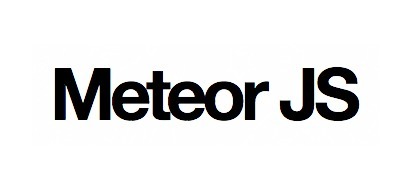Open-source and written entierly in JavaScript, Meteor hopes to change the way web apps are written.
Through features like live page updating and hot code pushing, they want to make web development on the client and in the cloud at the same time a possibility. In this talk at HTML5 Dev Conf 3, Matt Debergalis talks about how Meteor came to be, and breaks down some of the inner workings of their product's simultaneous development abilites.
Get Started for FREE
Sign up with Facebook Sign up with X
I don't have a Facebook or a X account



 Your new post is loading... Your new post is loading...
 Your new post is loading... Your new post is loading...
Current selected tag: 'Meteor'. Clear
No comment yet.
Sign up to comment
Meteor is a new development platform that makes it dramatically faster to write rich web applications in pure JavaScript. In this talk from HTML5DevConf, Matt DeBergails, founder of Meteor asks, "how do we build this new style of application that's just fundamentally different than the tooling, and the practices that we've learned over the last ten years building for a server-centric environment?"
From
yauh
Meteor.js is an open-source platform built on node.js for building web apps quite rapidly. It is designed to allow programmers to create applications in a modern fashion, using up-to-date paradigms. If you’re interested to know what features will be available when, have a look at the Meteor Roadmap. In the meantime, if you want to learn more about developing applications using JavaScript and Meteor, here’s a short compilations of things I found helpful to jumpstart. Once you know JavaScript basics you can dive into Meteor. Since the aim of Meteor.js is to radically simplify app development, you will very quickly be able to see good results. Outline: * Why Meteor?
Jan Hesse's insight:
An extensive curated List of learning material and HowTos This is 2013. If you are going to build a webapp, you must add real-time capabilities to the app. It is the standard. Meteor does a pretty good job at helping you to quickly build and make apps real-time. But meteor is tightly coupled with MongoDB and it is the only way to add real-time capabilities. Sometimes, this is overkill.
MongoDB is a perfect match for Meteor. But we don’t need to use MongoDB for all our real-time activities. For some problems, messaging based solutions work really well. It’s the same problem that pubnub andreal-time.co are also addressing. |
Out of the box, Meteor utilizes MongoDB for databases, Node.js for the server, Handlebars.js for templating, the Meteor class for awesomeness, and vanilla JavaScript for everything else. These tools make Meteor unique because it enables reactivity with two way databinding, synchronization with hot-code-pushes, responsiveness with latency compensation, and functions with vanilla JavaScript from end-to-end. There may be two audiences reading this, so I’ll describe each of my favorite Meteor.js features with this in mind. * TWO WAY DATA-BINDING IN METEOR.JS * HOT CODE PUSHES * LATENCY COMPENSATION EventedMind is a place dedicated to learning. Sometimes I'm learning the material along with you, and sharing as I go. Other times, I'm teaching from experience. And sometimes, I'm learning and teaching by experimenting with or creating new projects. In the future, I hope to cover projects and Meteor packages that other people have created as well. Meteor is at the forefront of a new wave of frameworks that make building web apps easier, simpler, and faster. Not only is Meteor entirely real-time (meaning any change to your database is automatically reflected live in the browser), but the fact that it uses JavaScript on both the client and servermeans that you won't have to juggle with multiple languages and environments anymore. No matter your programming experience, by following our step-by-step instructions you'll be able to get your own Meteor app up and running in a matter of days! What we are building in this tutorial is a real-time social news app, complete with posting, voting and commenting. 
Jan Hesse's comment,
August 28, 2013 3:51 PM
Sacha Greif and Tom Coleman give a talk during the Discover Meteor Book Release Party on May 6, 2013, with an introduction by Meteor cofounder Matt DeBergali
During the HTML5 Track at QCon New York 2013 Matt DeBergalis gave a talk on Meteor, the open-source real-time web application framework that Debergalis co-founded. According to DeBergalis, the client versus server-side pendulum has swung many times: from the mainframe (server-side) to the desktop (client-side) to the web (server-side) and now to the modern web where clients get increasingly capable and more and more work happens in the client again. However, the tools to build these modern web applications, DeBergalis argues, have not caught up. The goal of Meteor is to provide the developer with the tools to build these types of real-time web applications more easily and consistently. |













